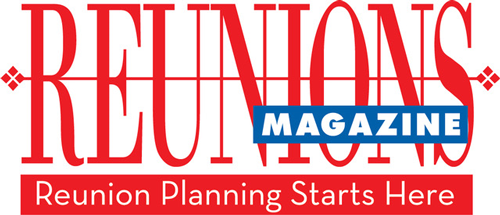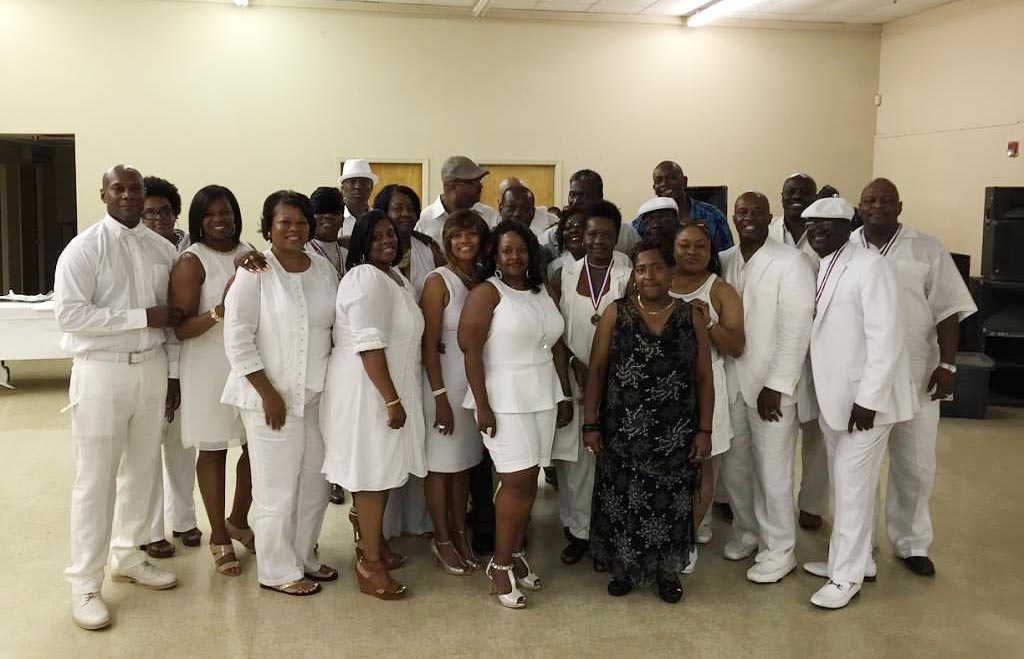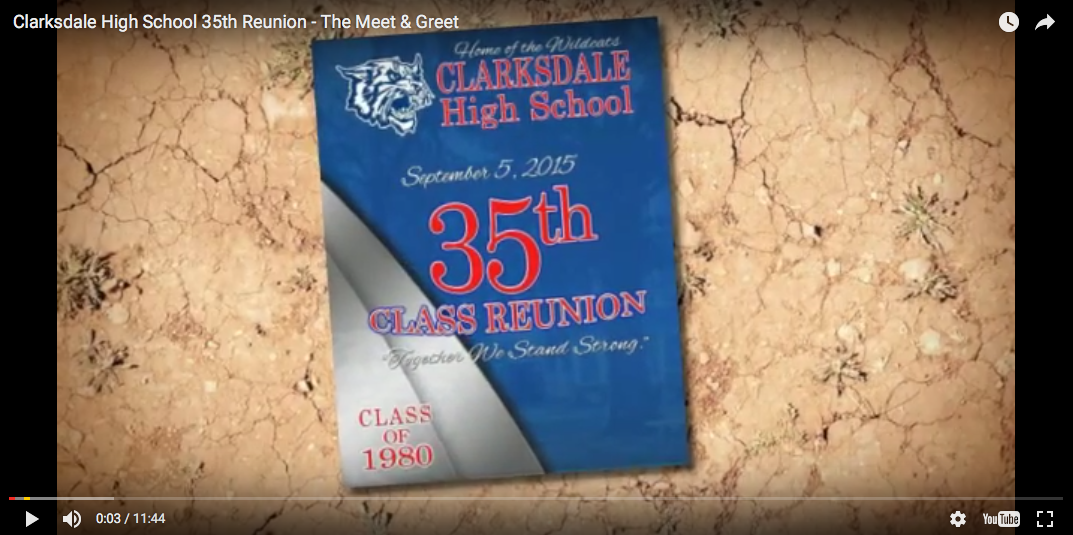by Steve Rhodes
If you find yourself in charge of a class reunion, before you plunge ahead–choosing a date and booking a venue–stop and ask yourself what you’re really trying to accomplish.
The purpose of a reunion can and should be about more than meeting in a room for a few hours every decade. If a reunion means just the event, it can be pretty shallow and unsatisfying. Reunions frequently are roughly akin to speed dating: at typical reunions, you only have time to ask a few trivial questions — Where do you live these days? What do you do [for a living]? — before moving on to the next stranger, whom you may or may not have even known decades ago in school.
Done right, reunions are about bonding, which should happen before, during and after the event. But for bonding to occur, there are two necessary ingredients: finding and communicating. Most reunion committees fret about the former while forgetting about the latter, If your committee is spending all of its time planning and publicizing the event, then it’s setting its sights way too low.
Try instead to rebond your class in a way they’ve never have been bonded before. It is quite possible with the right techniques. And, if you do this, be ready to expect some miraculous results. This is what the Class of 1965 from Garland High School in Garland, Texas, has been able to accomplish.
Our story begins in the spring of 2004. The organizer of our 30th reunion died and the address list was lost. Our class missed having the 35th, which we’d voted to hold. With no one grabbing the baton for the 40th in 2005, I took it, elected myself head of the non-existent reunion committee, and used classmates.com to make contact with several dozen classmates. By the middle of June 2004, we had formed a reunion committee (26 members) and met for one of only a few meetings. I lived a half continent away in California, so we used email and phones to coordinate everything.
From the outset, we set ourselves a goal of making sure everyone felt welcome whether they were the star of the football team or were the most obscure member of the out-crowd in school. We also wanted to find as many people as possible. This we did in spades, locating every single member of our class of 751 as well as every one of our 150 teachers. (The accomplishment of finding everyone after 40 years, and the reunion itself, were covered by the Dallas Morning News.)
We felt that the more people who got actively involved in the reunion committee, the more the excitement would build and spread. So whenever anyone expressed any interest whatsoever in helping, we immediately found a job for them, even if it was small. The net result was a reunion committee of almost 100 members, which is bigger than the total attendance at many reunions. Whenever we met, we did it as a group, rather than trying to get just the committee heads together. And when we communicated to the committee, the email went to the entire committee. We never let anyone fail. When something important wasn’t happening, we didn’t wring our hands, we just pitched in to help that person succeed.
The single most important thing we did was to start a weekly email newsletter that now goes to over 600 people. Newsletters have about a half dozen articles each week, with two regular articles: one feature about what has happened to one of our classmates or teachers since graduation, and another announcing the upcoming week’s birthday list. Other article series have been about such diverse subjects as summer jobs, funny stories from school years, memories about things and places from our youth, reunion planning and locating lost classmates. Generally we have a backlog of articles. The beauty of this newsletter is that content is submitted by other classmates, making it simple to assemble and distribute.
In the months before the reunion, we used newsletters to build excitement, provide information about the reunion and get everyone involved in tracking down lost classmates. One of many things we did to make newsletters fun to read was to run contests. One was to choose the theme of the reunion — the winning entry was the same as the title of this article, “Excited, Delighted and Reunited!” The most popular game was guessing the reunion headcount—i.e., how many people (including spouses/guests) would attend. For the record, the total attendance was approximately 1,000 (500 students, 100 teachers and 400 spouses/guests). Our high school’s previous record class reunion, we believe, was around 250, so we definitely set a new record.
Because of what newsletters accomplished, classmates and teachers arrived already bonded and excited. Many people traditionally fear going to a reunion since they no longer feel a part of the group. Our newsletters fixed that. The result was that a large number of people came who had never ever been to a reunion before and had never even considered coming.
Our newsletters were definitely effective because 75% of those who got the newsletter came to the reunion. So, what about those with no email? To assure everyone felt included, committee members sent handwritten letters to everyone without an email address. We felt we owed teachers so much that we sent handwritten letters to them twice, whether they had email or not.
Our easy to remember website address (Garland1965.com) was used to build excitement and to communicate. One reunion subcommittee was in charge of photographers. Website photos provide a way for those who couldn’t come to vicariously join in the festivities and for those who did to forever remember it.
We distributed a directory with names, addresses, phone numbers and email addresses so people could stay in touch.
Five teachers in their 90s were coming to the reunion, so we formed a subcommittee to provide rides. We were surprised to find that people were so motivated by then that they found a way to get there on their own and didn’t require our help. This subcommittee ended up being the least active.
Part of communicating is the personal touch, so we formed a subcommittee called “greeters” whose job it was to greet every person as they arrived to make sure they felt really welcome. A separate group of people handled registration. We provided picture badges so people would be able to remember each other after 40 years. Given our ages, we made sure pictures were large and names were in a font big enough that aging eyes could read them at a glance. Nothing is more embarrassing than staring at a man’s, or especially a woman’s, chest before looking at their face to say hello.
Finally, our ability to communicate was tested dramatically right before the reunion. Less than a month before the event, we were notified we would not be able to use our high school as planned because of unanticipated construction. This meant we had to contact 1000 people and verify they knew the new site. We were so successful that no one went to the wrong place. If that isn’t a testimony to the effectiveness of our communicating abilities, I don’t know what is.
On a personal note
My work in leading what I consider one of the world’s greatest reunion committees is something which has been so extremely rewarding, words are not adequate to capture my feelings. Rarely has so much hard work been so much fun and produced such positive results. Because of the reunion and our continuing weekly email newsletters, I have an opportunity to talk electronically to several of my old classmates every day now. Before this reunion, years would go by between communications with anyone from my old school. I feel very lucky indeed.
About the author
Steve Rhodes has enjoyed three careers. After getting a PhD in Computer Science from the University of California, Berkeley, he worked at several high tech firms, including Bell Labs, Apple and HP. After that he became one of the world’s most prolific on-line film reviewers. Lately he has been helping other reunions in finding their lost classmates and in their planning. He can be reached at 214-383-3837; email [email protected]. The class’s website is http://www.Garland1965.com.
I graduated in 1965 from Garland High School in Garland, Texas. We won the state football championship two years in a row and were the last class before the town added a second high school.
We never had the 35th reunion we intended, so in June 2004, I put together a reunion committee for our 40th reunion for June 2005. In the process, with help of the increasingly large committee, we did the following.
- Found every one of the 751 class members, although we started with only 50 known addresses; 14% are deceased.
- Found 80 more classmates who were with us along the way but moved away before our senior year.
- Found all 150 teachers from our high school years; 40% are deceased.
- Found 254 of our junior high and elementary teachers; 66% are deceased.
- Established an active reunion committee of almost 100 people, larger than most reunions.
- Started a weekly email newsletter, now at the 61st edition, full of what-ever-happened-to and funny stories.
- Held a 40th reunion of two nights, attended by 1,000 people, including 500 students, 100 teachers and 400 spouses/guests. Five teachers in their nineties came and a large percentage of classmates who were attending their first reunion.
- Launched a great website (www.garland1965.com/) and plan more activities so we can be together more often.
As fortuitous by-products, we produced many heart-warming, incredible stories, including one in which I was able to reunite a mother and daughter lost to each other 25 years ago and one in which a baby given up at birth was reunited with his mother after 40 years.
Our reunion motto was “Excited, Delighted and Reunited!” which was exactly how we all feel now.
Reported by Steve Rhodes, Campbell, California.





